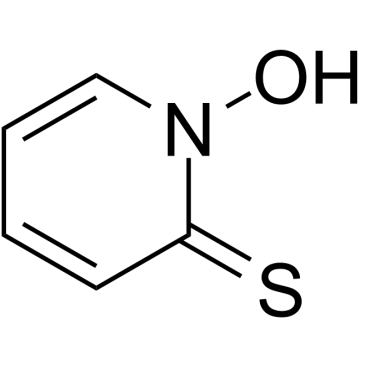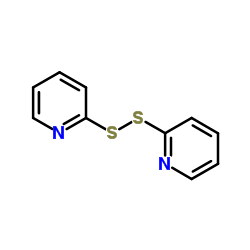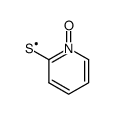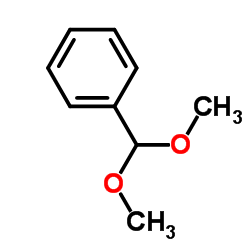3696-28-4
| 中文名 | 双硫氧吡啶 |
|---|---|
| 英文名 | dipyrithione |
| 中文别名 |
2,2’-二硫代二(吡啶-1-氧化物)
2,2′-二甲基苯甲酰苯胺 2,2-二硫代双(吡啶-N-氧化物 |
| 英文别名 |
1-oxido-2-[(1-oxidopyridin-1-ium-2-yl)disulfanyl]pyridin-1-ium
2,2’-disulfanediyldipyridine 1,1’-dioxide 2,2’-dithiobis[pyridine] 1,1’-dioxide di-2-pyridyl disulfide 1,1’-dioxide 2,2'-Dithiobis(pyridine-N-oxide) EINECS 223-024-5 |
| 描述 | 联吡啶硫酮是一种有效的抗菌剂。联吡啶硫酮具有抗真菌活性和抗增殖活性。联吡啶硫酮在G1期诱导细胞凋亡和周期阻滞。联吡啶硫酮在体内具有抗炎活性。联吡啶硫酮具有抗肿瘤活性。联吡啶硫酮在皮肤癣菌病的研究中具有潜力[1][2][3]。 |
|---|---|
| 相关类别 | |
| 体外研究 | 联吡啶硫酮(20 μg/mL)对红色毛癣菌具有抗真菌活性,MIC值为6.03µM[1]。联吡啶硫酮(72小时)显示对293的细胞毒性活性 IC50值为0.22µM的T细胞[1]。联吡啶硫酮(1-5µM;8.5 h)以剂量依赖性方式抑制LPS(100 ng/ml)诱导的RAW264.7细胞中iNOS和COX-2的上调[2]。联吡啶硫酮(1µM;8.5小时)抑制LPS诱导的iNOS增加,但不抑制COX-2 mRNA水平,抑制LPS增加的NO产生[2]。联吡啶硫酮(3µM;2,5小时)降低LPS诱导的STAT1磷酸化,不影响LPS诱导RAW 246.7细胞中MAPK和NF-κB活化[2]。联吡啶硫酮(0-5μg/mL;48小时)对KB、231、U937和K562细胞具有剂量依赖性的抗增殖活性[3]。联吡啶硫酮(2.5μg/ml)诱导G1期细胞凋亡和周期阻滞[3]。Western印迹分析[2]细胞系:RAW264.7细胞浓度:1-5µM孵育时间:8.5 h结果:以剂量依赖性方式抑制LPS(100 ng/ml)诱导的iNOS和COX-2的表达。细胞增殖试验[2]细胞系:KB、231、U937、K562细胞浓度:2.5μg/ml孵育时间:24小时结果:诱导细胞周期阻滞在G1期,诱导p21积累,CyclinD1和CyclinE1表达下调。凋亡分析[3]细胞系:KB、231、U937、K562细胞浓度:2.5μg/ml孵育时间:36h结果:通过诱导半胱氨酸蛋白酶-9、半胱氨酸激酶-3和PARP的裂解诱导凋亡。Western印迹分析[3]细胞系:RAW264.7细胞浓度:1-5µM孵育时间:8.5 h结果:以剂量依赖性方式抑制LPS(100 ng/ml)诱导的iNOS和COX-2的表达。 |
| 体内研究 | 联吡啶硫酮(0.2 mg/cm2;每天一次,持续10天)在豚鼠中显示出良好的抗皮肤癣活性[1]。联吡啶硫酮(1,2.5,5 mg/kg;i.p.)在小鼠中显示抗炎活性[2]。联吡啶硫酮(5mg/kg;腹腔注射;每日10天)在小鼠中显示出抗肿瘤酰化作用[3]。动物模型:豚鼠(感染红色毛癣菌)[1]剂量:0.2mg/cm2给药:每天一次,连续10天。结果:毛发生长正常,皮肤无鳞片。动物模型:18-22g雄性ICR小鼠2剂量:1、2.5、5mg/kg给药:腹腔注射。结果:存活率分别从10%提高到30%、60%和90%。动物模型:6周,18-20g雄性ICR小鼠(肝癌22(H22)细胞)[3]剂量:2.5mg/kg给药:腹腔注射。;结果:抑制肿瘤生长。 |
| 参考文献 |
| 密度 | 1.38 g/cm3 |
|---|---|
| 沸点 | 582.8ºC at 760 mmHg |
| 熔点 | 205ºC |
| 分子式 | C10H8N2O2S2 |
| 分子量 | 252.31300 |
| 闪点 | 306.2ºC |
| 精确质量 | 252.00300 |
| PSA | 101.52000 |
| LogP | 3.34300 |
| 外观性状 | 米色结晶粉末 |
| 折射率 | 1.681 |
| 储存条件 | 室温,干燥 |
| 计算化学 | 1.疏水参数计算参考值(XlogP):0.6 2.氢键供体数量:0 3.氢键受体数量:4 4.可旋转化学键数量:3 5.互变异构体数量:无 6.拓扑分子极性表面积102 7.重原子数量:16 8.表面电荷:0 9.复杂度:199 10.同位素原子数量:0 11.确定原子立构中心数量:0 12.不确定原子立构中心数量:0 13.确定化学键立构中心数量:0 14.不确定化学键立构中心数量:0 15.共价键单元数量:1 |
Synonym:Pyridine, 2,2'-Dithiobis-, 1,1'-Dioxide; Omadine Disulfide Section 2 - COMPOSITION, INFORMATION ON INGREDIENTS
Risk Phrases: None Listed. Section 3 - HAZARDS IDENTIFICATION EMERGENCY OVERVIEW
Hygroscopic (absorbs moisture from the air). Potential Health Effects Eye: Causes severe eye irritation. Skin: May cause skin irritation. Ingestion: May cause irritation of the digestive tract. The toxicological properties of this substance have not been fully investigated. Inhalation: May cause respiratory tract irritation. The toxicological properties of this substance have not been fully investigated. Chronic: Adverse reproductive effects have been reported in animals. Section 4 - FIRST AID MEASURES Eyes: Flush eyes with plenty of water for at least 15 minutes, occasionally lifting the upper and lower eyelids. Get medical aid. Skin: Get medical aid. Flush skin with plenty of water for at least 15 minutes while removing contaminated clothing and shoes. Wash clothing before reuse. Ingestion: Never give anything by mouth to an unconscious person. Get medical aid. Do NOT induce vomiting. If conscious and alert, rinse mouth and drink 2-4 cupfuls of milk or water. Inhalation: Remove from exposure and move to fresh air immediately. If not breathing, give artificial respiration. If breathing is difficult, give oxygen. Get medical aid. Notes to Physician: Section 5 - FIRE FIGHTING MEASURES General Information: As in any fire, wear a self-contained breathing apparatus in pressure-demand, MSHA/NIOSH (approved or equivalent), and full protective gear. During a fire, irritating and highly toxic gases may be generated by thermal decomposition or combustion. Extinguishing Media: Use agent most appropriate to extinguish fire. Use water spray, dry chemical, carbon dioxide, or appropriate foam. Section 6 - ACCIDENTAL RELEASE MEASURES General Information: Use proper personal protective equipment as indicated in Section 8. Spills/Leaks: Vacuum or sweep up material and place into a suitable disposal container. Clean up spills immediately, observing precautions in the Protective Equipment section. Avoid generating dusty conditions. Provide ventilation. Section 7 - HANDLING and STORAGE Handling: Wash thoroughly after handling. Remove contaminated clothing and wash before reuse. Use with adequate ventilation. Minimize dust generation and accumulation. Avoid contact with eyes, skin, and clothing. Keep container tightly closed. Avoid ingestion and inhalation. Storage: Store in a tightly closed container. Store in a cool, dry, well-ventilated area away from incompatible substances. Store protected from moisture. Section 8 - EXPOSURE CONTROLS, PERSONAL PROTECTION Engineering Controls: Facilities storing or utilizing this material should be equipped with an eyewash facility and a safety shower. Use adequate ventilation to keep airborne concentrations low. Exposure Limits CAS# 3696-28-4: Personal Protective Equipment Eyes: Wear appropriate protective eyeglasses or chemical safety goggles as described by OSHA's eye and face protection regulations in 29 CFR 1910.133 or European Standard EN166. Skin: Wear appropriate protective gloves to prevent skin exposure. Clothing: Wear appropriate protective clothing to prevent skin exposure. Respirators: A respiratory protection program that meets OSHA's 29 CFR 1910.134 and ANSI Z88.2 requirements or European Standard EN 149 must be followed whenever workplace conditions warrant respirator use. Section 9 - PHYSICAL AND CHEMICAL PROPERTIES Physical State: Powder Color: beige Odor: none reported pH: Not available. Vapor Pressure: Not available. Viscosity: Not available. Boiling Point: Not available. Freezing/Melting Point: 205 deg C Autoignition Temperature: Not applicable. Flash Point: Not applicable. Explosion Limits, lower: Not available. Explosion Limits, upper: Not available. Decomposition Temperature: Solubility in water: Specific Gravity/Density: Molecular Formula: C10H8N2O2S2 Molecular Weight: 252.31 Section 10 - STABILITY AND REACTIVITY Chemical Stability: Stable under normal temperatures and pressures. Conditions to Avoid: Incompatible materials, dust generation, excess heat, strong oxidants, exposure to moist air or water. Incompatibilities with Other Materials: Moisture, strong oxidizing agents. Hazardous Decomposition Products: Nitrogen oxides, carbon monoxide, oxides of sulfur, irritating and toxic fumes and gases, carbon dioxide, hydrogen sulfide. Hazardous Polymerization: Has not been reported Section 11 - TOXICOLOGICAL INFORMATION RTECS#: CAS# 3696-28-4: UT2965000 LD50/LC50: CAS# 3696-28-4: Draize test, rabbit, eye: 100 uL/24H Severe. Carcinogenicity: Pyridine, 2,2'-Dithiobis-, 1,1'-Dioxide - Not listed by ACGIH, IARC, or NTP. Other: See actual entry in RTECS for complete information. Section 12 - ECOLOGICAL INFORMATION Section 13 - DISPOSAL CONSIDERATIONS Dispose of in a manner consistent with federal, state, and local regulations. Section 14 - TRANSPORT INFORMATION IATA Not regulated as a hazardous material. IMO Not regulated as a hazardous material. RID/ADR Not regulated as a hazardous material. Section 15 - REGULATORY INFORMATION European/International Regulations European Labeling in Accordance with EC Directives Hazard Symbols: Not available. Risk Phrases: Safety Phrases: S 24/25 Avoid contact with skin and eyes. S 28A After contact with skin, wash immediately with plenty of water. S 37 Wear suitable gloves. S 45 In case of accident or if you feel unwell, seek medical advice immediately (show the label where possible). WGK (Water Danger/Protection) CAS# 3696-28-4: No information available. Canada CAS# 3696-28-4 is listed on Canada's NDSL List. CAS# 3696-28-4 is not listed on Canada's Ingredient Disclosure List. US FEDERAL TSCA CAS# 3696-28-4 is listed on the TSCA inventory. SECTION 16 - ADDITIONAL INFORMATION N/A |
|
毒理学数据: 1、皮肤/眼睛刺激性 标准的Draize试验:兔子,眼睛接触:500mg/24H;反应的严重程度:严重。 2、生殖毒性 小鼠经皮下TDLo:5280μg/kg;小鼠经皮下TDLo:1600μg/kg;小鼠经皮下TDLo:1344μg/kg; CHEMICAL IDENTIFICATION
HEALTH HAZARD DATAACUTE TOXICITY DATA
|
| 安全声明 (欧洲) | S24/25 |
|---|---|
| 海关编码 | 2933399090 |
|
~93% 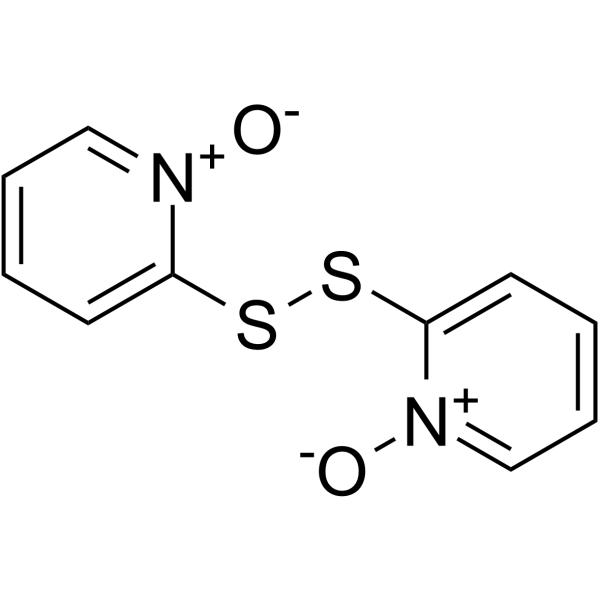
3696-28-4 |
| 文献:Mahieu, Jean-Pierre; Gosselet, Martine; Sebille, Bernard; Beuzard, Yves Synthetic Communications, 1986 , vol. 16, # 13 p. 1709 - 1722 |
|
~% 
3696-28-4 |
| 文献:Air Liquide Sante (International); SCHUeLKE and MAYR GMBH Patent: EP1514473 A1, 2005 ; Location in patent: Page/Page column 7 ; |
|
~8% 
3696-28-4 |
| 文献:Barton, Derek H. R.; Jaszberenyi, Joseph Cs.; Morrell, Andrew I. Tetrahedron Letters, 1991 , vol. 32, # 3 p. 311 - 314 |
|
~% 
3696-28-4 |
| 文献:Alam, Maksudul M.; Watanabe, Akira; Ito, Osamu Photochemistry and Photobiology, 1996 , vol. 63, # 1 p. 53 - 59 |
| 上游产品 3 | |
|---|---|
| 下游产品 8 | |
| 海关编码 | 2933399090 |
|---|---|
| 中文概述 | 2933399090. 其他结构含非稠合吡啶环的化合物. 增值税率:17.0%. 退税率:13.0%. 监管条件:无. 最惠国关税:6.5%. 普通关税:20.0% |
| 申报要素 | 品名, 成分含量, 用途, 乌洛托品请注明外观, 6-己内酰胺请注明外观, 签约日期 |
| Summary | 2933399090. other compounds containing an unfused pyridine ring (whether or not hydrogenated) in the structure. VAT:17.0%. Tax rebate rate:13.0%. . MFN tariff:6.5%. General tariff:20.0% |




